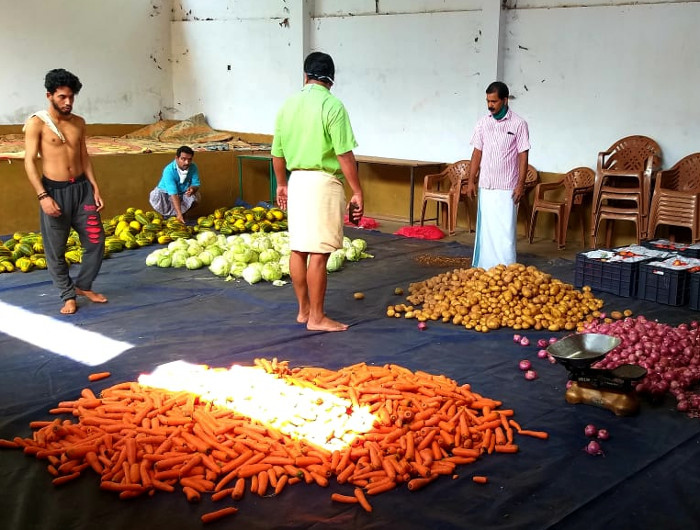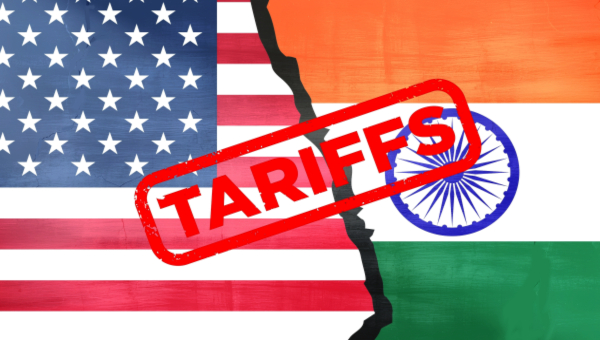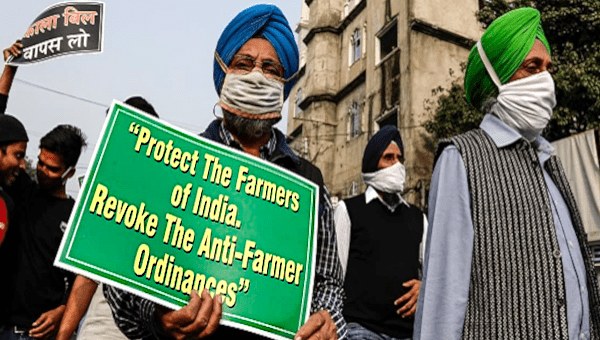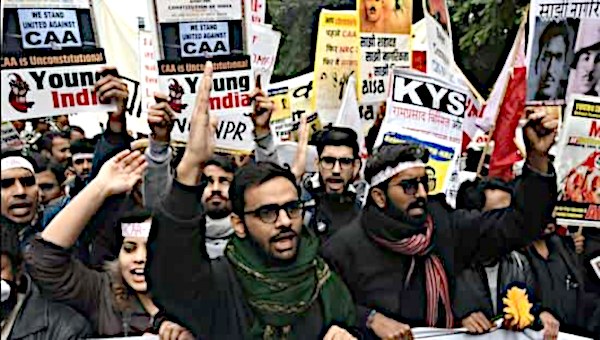India’s Kerala Is Combating COVID-19 Through Participatory Governance
The left-ruled Indian State of Kerala continues to remain in the global spotlight for its effective and efficient measures in tackling the COVID-19 pandemic. Kerala dominated the Indian news headlines, showing the rest of the world its potential, its strength and its humane approach, demonstrating an operative model that other states can follow. The Kerala government’s apt and adaptive state-interventionist strategy even garnered attention in the international media and in academic journals, including that of MIT and Oxford, which praised the robustness of the ‘Kerala Model’ of development.

In Kerala, over its formative years, the communist state government, along with its collective organizations and trade unions, played an instrumental role in building up a strong public sector, which has given the state the leverage to effectively control pandemics and natural disasters. With its almost 100 per cent literacy and its top Human Development Index (HDI) ranking, the state has always been receptive to and proactive in progressive change.
But this is just one (rather important) part of the larger story. Kerala not only has an efficient government, but also has at its disposal a conscious and responsive society of people who are well aware that their role in this deadly fight is as important as that of the government. It is with this collective strength that the southern state of India survived the Nipah Virus and two great floods over the past two years.
In sharp contrast to the state of affairs in the rest of India, Kerala’s lead in the Covid fight has to do with its unique participatory governance, where people worked hand-in-glove with the government, complementing each other’s efforts. From providing food to conducting media briefs every day, the government made sure that the people were fed and well informed about the situation. In addition, various groups of people came forward to volunteer and made sure that the government policies were implemented on time and effectively in order to ‘break the chain’.
Formation of the Sannadha Sena
The Chief Minister of Kerala, Pinarayi Vijayan, called out the youth in the state to join the Sannadha Sena, a community volunteer force formed by the government, recognizing that to be successful the government’s plans for controlling the crisis needed more than the machinery of state could provide. The online registrations started in March, with numerous registrations pouring in to aid the needy. Though the initial plan was to mobilize around 230,000 able-bodied youth, age 22 to 40, the registrations received a massive response of more than 300,000 volunteers of varied ages and backgrounds, working in different sectors ranging from IT and medicine to skilled labourers, registering themselves with the Sena within a month.
Various organizations, including NGOs, NSS, NCC and Youth Commission called on their volunteers to get involved in the force. Both Kerala’s ruling and opposition parties also came forward in solidarity to the Sannadha Sena, entreating its members to register themselves with the force.
The purpose of the Sannadha Sena was to use its volunteers to provide food and other essentials as well as physical assistance to those who were under lockdown. After the registrations were done, the health authorities examined the volunteers for illness and provided them with training for helping the affected during the outbreak without compromising their own health. The state also gave them the necessary protective equipment and paid for their food and travel expenses.
The structure of the Sena was such that each panchayat had 200 volunteers, a municipality had 500 and a corporation had 750. These volunteers located people in their neighbourhood who needed help including the aged, the disabled and the homeless, and made sure they were taken care of. It was through the Sannadha Sena that the government was also able to set up a helpline service for assisting the people.
Community Kitchen Volunteers
Understanding that the lockdown would adversely impact people’s earnings, the government made a call to establish community kitchens across the state to provide low-cost affordable food. Thus, at the decree of Chief Minister Pinarayi Vijayan, hundreds of such kitchens mushroomed across 941 panchayats in the state by March 25th.
This led to the formation of an ‘arogya sena’, a group of people who volunteered to cook meals in large numbers in community kitchens to ensure that nobody went hungry. Through the effective use of ground-level resources of local self-governments and people’s groups, arrangements were also made to distribute free food to those in need. In an extraordinary move, the delivery of these free meals directly to their doorsteps was arranged, thus protecting the people’s dignity in front of others.
The community kitchen operated by using two crews and two timelines, one in the morning to cook the food and the other starting at noon to distribute it, all the while maintaining the protocols of physical distancing. Food packages amounting to 280,000 are now being distributed each day by these volunteers.
Other than the government, several organizations, local clubs, and private individuals also have donated funds to help run these community kitchens.
Reaching Out to Families with Kudumbasree
Kudumbasree, a three-tier community network project of women’s self-help groups, was put to use at multiple levels. Not only were they involved in the setting up of numerous community kitchens in various areas of the state, but the government was also able to call upon them to reach out to families in various ways.
Kudumbashree formed 190,000 WhatsApp groups with 2,200,000 (22 lakh) neighbourhood group members to educate them about government instructions regarding COVID-19. They gave a memo to all the 4,300,000 (43 lakh) neighbourhood group members, which they discussed at their meetings, regarding details of the ‘Break the Chain’ campaign and the need for special care for those above 60 years of age.
Kudumbashree was also involved in preparing and selling hundreds of thousands of cotton masks through their 306 tailoring units. Numerous micro-enterprise units have prepared sanitizer when there was a shortage and their tailoring units have prepared cloth bags for the Kerala State Civil Supplies Corporation.
Since the continuous lockdown periods forced people to stay home from work, it was hard for families, especially those who were working in the informal sector, to sustain themselves without any source of income. Thus, it was imperative for the government to provide people with necessary money during the pandemic period. It was through the Kudumbasree that the government was able to give interest-free loans worth ₹2000 crore to families who needed them.
In places that were noted as ‘red spots’ in Kerala, strict directions were given to the people to remain home, except in cases of medical and other emergencies. To allow for the purchase of groceries and other essentials without having to go out, the local self-governments permitted local Kudumbasree members to collect and deliver those essentials directly to people’s homes, limiting the risk of contamination in those areas.
Active Political and Cultural Organizations
The various political and cultural organizations in Kerala played a crucial role in reaching out to the common people, taking care of struggling families, and distributing packages of vegetables and essential dry food grains to them.
Members of both the ruling Communist Party of India (Marxist) – CPI(M) – and the opposition Indian National Congress (INC) decentralized efforts locally and took care of people by regularly ensuring that they were cared for during the lockdown. People who had financial issues were contacted and given support through funding collected from the local party workers.
What makes this unique effort of the government and the people working hand-in-hand possible is Kerala’s people-centric development practises promoted by its consecutive governments. The state has invested heavily in its public sector, thus decreasing to a great extent the class disparities in access to health and other social services. Policies guided by the theory of the welfare state and participatory management systems have made Kerala’s development indices stand out from the rest of the country. •





